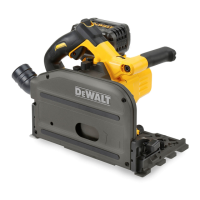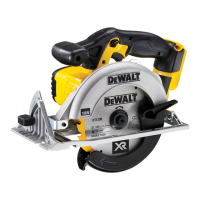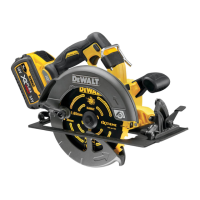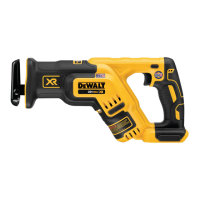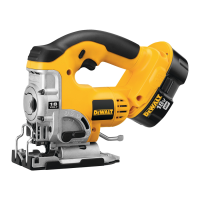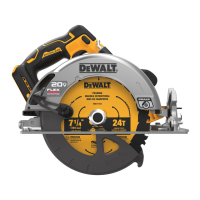41
ENGLISH
continuous operation. The edge of the anti-splinter guard
now corresponds exactly to the cutting edge of theblade.
To trim the anti-splinter guard on the other side of the guide
rail, remove the saw from the rail and rotate the rail 180°. Repeat
steps 1 through 4.
NOTE: If desired, the splinter guard can be bevelled to 45°, then
repeat steps 1 through 4. This allows one side of the rail for
cutting parallel cuts and the other side of the rail is tuned in for
45° bevel cuts (Fig. H).
NOTE: If the anti-splinter guard is trimmed for parallel cutting
on both sides, then when the unit is bevelled, the blade will not
run true to the edge of the anti-splinter guard. This is because
the pivot point of the unit bevel is not stationary and the blade
moves out when the unit isbevelled.
WARNING: To reduce the risk of injury, ALWAYS secure the
guide rail with aclamp.
Speed Adjustment (Fig.A)
The speed can be regulated between 2500 and 4200 rpm using
the speed wheel
19
. This enables you to optimise the cutting
speed to suit the material. Refer to the following chart for type
of material and speedrange.
Type of Material to be Cut Speed Range
Solid wood (hard, soft) 3–7
Chipboards 4–7
Laminated wood, blockboards, veneered and coated boards 2–7
Paper and carton 1–3
Door Cutting (Fig.I)
1. Place the plunge saw with the outer guard
23
on a clean,
flat floor.
2. Press the shoe
4
with the front side on the door against the
adjusted depthstop.
Dust Extraction (Fig.A)
WARNING: Risk of dust inhalation. To reduce the risk of
personal injury, ALWAYS wear an approved dustmask.
Your tool is fitted with a dust extraction outlet
17
.
The Dust Extraction Adaptor allows you to connect the tool to
an external dust extractor, either using the AirLock™ system
(DWV9000-XJ), or a standard 35mm dust extractorfitment.
WARNING: ALWAYS use a vacuum extractor designed
in compliance with the applicable directives regarding
dust emission when sawing wood. Vacuum hoses of most
common vacuum cleaners will fit directly into the dust
extractionoutlet.
MAINTENANCE
Your
power tool has been designed to operate
over a long period of time with a minimum of maintenance.
Continuous satisfactory operation depends upon proper tool
care and regularcleaning.
WARNING: To reduce the risk of serious personal
injury, turn tool off and disconnect battery pack
before making any adjustments or removing/
installing attachments or accessories. An accidental
start-up can causeinjury.
The charger and battery pack are notserviceable.
Lubrication
Your power tool requires no additionallubrication.
Cleaning
WARNING: Blow dirt and dust out of the main housing
with dry air as often as dirt is seen collecting in and around
the air vents. Wear approved eye protection and approved
dust mask when performing thisprocedure.
WARNING: Never use solvents or other harsh chemicals
for cleaning the non-metallic parts of the tool. These
chemicals may weaken the materials used in these parts.
Use a cloth dampened only with water and mild soap.
Never let any liquid get inside the tool; never immerse any
part of the tool into aliquid.
Optional Accessories
WARNING: Since accessories, other than those offered
by
, have not been tested with this product, use
of such accessories with this tool could be hazardous.
To reduce the risk of injury, only
recommended
accessories should be used with thisproduct.
Consult your dealer for further information on the
appropriateaccessories.
Protecting the Environment
Separate collection. Products and batteries marked
with this symbol must not be disposed of with normal
householdwaste.
Products and batteries contain materials that can
be recovered or recycled reducing the demand for raw
materials. Please recycle electrical products and batteries
according to local provisions. Further information is available at
www.2helpU.com.
Rechargeable Battery Pack
This long life battery pack must be recharged when it fails to
produce sufficient power on jobs which were easily done before.
At the end of its technical life, discard it with due care for our
environment:
• Run the battery pack down completely, then remove it from
thetool.
• Li-Ion cells are recyclable. Take them to your dealer or a
local recycling station. The collected battery packs will be
recycled or disposed ofproperly.
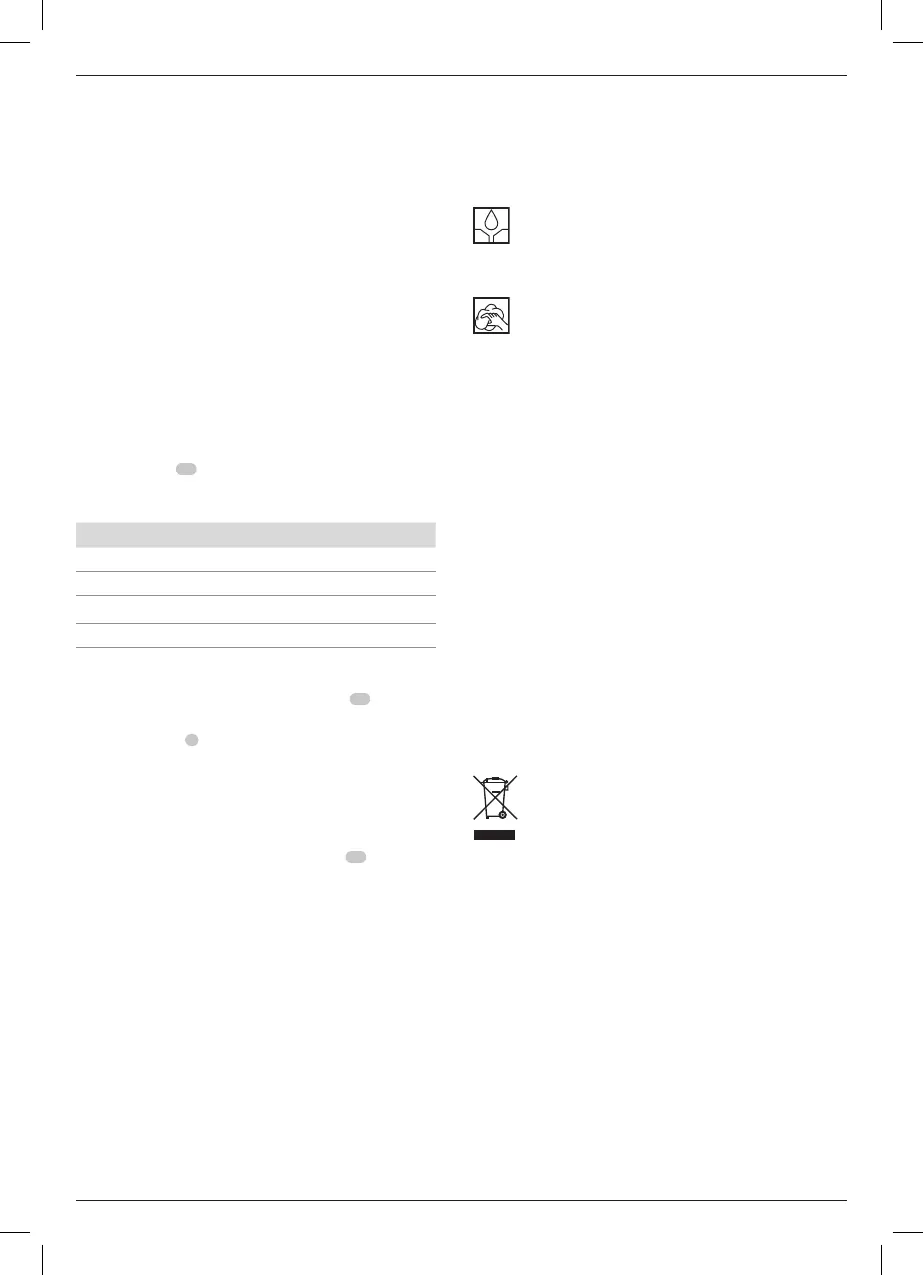